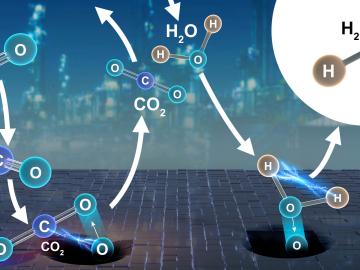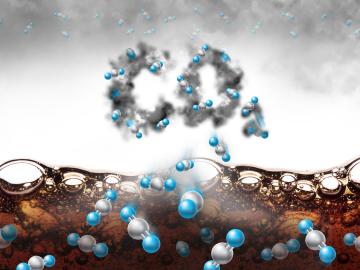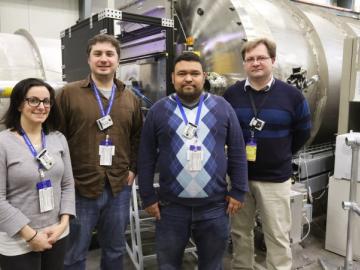
Filter News
Area of Research
- (-) Materials (144)
- (-) National Security (15)
- (-) Neutron Science (127)
- Advanced Manufacturing (22)
- Biological Systems (1)
- Biology and Environment (118)
- Biology and Soft Matter (1)
- Building Technologies (1)
- Computational Biology (2)
- Computational Engineering (2)
- Computer Science (3)
- Electricity and Smart Grid (1)
- Energy Frontier Research Centers (1)
- Energy Science (155)
- Functional Materials for Energy (1)
- Fusion and Fission (12)
- Fusion Energy (2)
- Isotope Development and Production (1)
- Isotopes (9)
- Materials Characterization (1)
- Materials for Computing (21)
- Materials Under Extremes (1)
- Mathematics (1)
- Nuclear Science and Technology (13)
- Quantum information Science (1)
- Supercomputing (88)
- Transportation Systems (1)
News Topics
- (-) 3-D Printing/Advanced Manufacturing (29)
- (-) Biomedical (21)
- (-) Environment (26)
- (-) Exascale Computing (2)
- (-) Fossil Energy (1)
- (-) Materials Science (87)
- (-) Nanotechnology (43)
- (-) Neutron Science (127)
- Advanced Reactors (6)
- Artificial Intelligence (24)
- Big Data (8)
- Bioenergy (19)
- Biology (14)
- Biotechnology (2)
- Buildings (6)
- Chemical Sciences (34)
- Clean Water (4)
- Composites (9)
- Computer Science (40)
- Coronavirus (15)
- Critical Materials (13)
- Cybersecurity (21)
- Energy Storage (39)
- Frontier (4)
- Fusion (9)
- Grid (11)
- High-Performance Computing (10)
- Hydropower (1)
- Irradiation (1)
- Isotopes (13)
- ITER (1)
- Machine Learning (18)
- Materials (81)
- Mathematics (1)
- Microscopy (27)
- Molten Salt (3)
- National Security (35)
- Nuclear Energy (22)
- Partnerships (15)
- Physics (30)
- Polymers (18)
- Quantum Computing (4)
- Quantum Science (16)
- Security (12)
- Simulation (2)
- Space Exploration (5)
- Summit (7)
- Transportation (21)
Media Contacts

Using the Titan supercomputer and the Spallation Neutron Source at the Department of Energy’s Oak Ridge National Laboratory, scientists have created the most accurate 3D model yet of an intrinsically disordered protein, revealing the ensemble of its atomic-level structures.

Quanex Building Products has signed a non-exclusive agreement to license a method to produce insulating material from ORNL. The low-cost material can be used as an additive to increase thermal insulation performance and improve energy efficiency when applied to a variety of building products.

Researchers at Oak Ridge National Laboratory proved that a certain class of ionic liquids, when mixed with commercially available oils, can make gears run more efficiently with less noise and better durability.

Researchers used neutron scattering at Oak Ridge National Laboratory’s Spallation Neutron Source to probe the structure of a colorful new material that may pave the way for improved sensors and vivid displays.

Using additive manufacturing, scientists experimenting with tungsten at Oak Ridge National Laboratory hope to unlock new potential of the high-performance heat-transferring material used to protect components from the plasma inside a fusion reactor. Fusion requires hydrogen isotopes to reach millions of degrees.

A new method developed at Oak Ridge National Laboratory improves the energy efficiency of a desalination process known as solar-thermal evaporation.

Collaborators at the Department of Energy’s Oak Ridge National Laboratory and U.S. universities used neutron scattering and other advanced characterization techniques to study how a prominent catalyst enables the “water-gas shift” reaction to purify and generate hydrogen at industrial scale.

Oak Ridge National Laboratory has teamed with Cornell College and the University of Tennessee to study ways to repurpose waste soft drinks for carbon capture that could help cut carbon dioxide emissions.

A team of researchers at Oak Ridge National Laboratory have demonstrated that designed synthetic polymers can serve as a high-performance binding material for next-generation lithium-ion batteries.

Scientists from the National Institute of Standards and Technology (NIST) and the University of Maryland are using neutrons at Oak Ridge National Laboratory (ORNL) to capture new information about DNA and RNA molecules and enable more accurate computer simulations of how they interact with everything from proteins to viruses.


